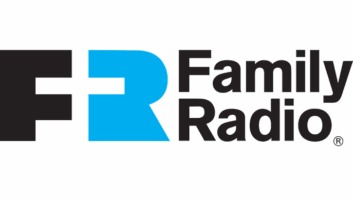Do you remember your first portable radio?
For Sjef Verhoeven, it was a Sony Walkman in 1993. As is common in the Netherlands, he would often ride his bike. That spring, he heard FM stations from the U.K. at a distance of about 300 kilometers. All day long, various BBC affiliates were audible.
“I had to find out why that was possible,” he said.
Verhoeven, 47, eventually became an electrical engineer for a wholesaler in radio and TV equipment in the Eindhoven area of the Netherlands. He earned his amateur radio license (PE5PVB) in 1999.
Marek Farkaš, 27, represents a newer generation. He grew up in Slovakia and knew the local frequencies of radio stations he could receive at a young age. Now living in the Czech Republic, it was Farkaš’ girlfriend, Ester Vlčková, who referred him to the FM DX Wikipedia page to shine light on the hobby of listening for distant FM signals in which now he invests a good deal of his time.

Despite their differences, Verhoeven and Farkaš have formed a unique partnership around the hobby of long-distance signal reception.
“We both share the common bond of annoying whoever we drive with by tuning around the car radio too much, looking for distant stations,” Farkaš said.
The TEF6686 chip
Verhoeven penned an article for IEEE Spectrum last November about the TEF6686 chip. Introduced by NXP Semiconductors in 2013, the chip has undergone several revisions. It has been deployed in various car radios, including several Pioneer models.

As Verhoeven wrote, the chip’s use of DSP technology makes it highly sensitive, capable of pulling in weak signals, and highly selective, able to filter out adjacent-channel interference. It supports both FM and AM reception, as well as RDS decoding.
Verhoeven’s fascination with the chip began during the Covid-19 lockdown in 2020.
“I was on holiday, had nowhere to go and I just started reading the available documentation,” he said.
On the Chinese marketplace website AliExpress, TEF6686 tuner modules were for sale. Verhoeven began to program it with the Arduino IDE and he released an initial firmware in early 2021.
As some portable versions with the TEF chip began appearing publicly, Verhoeven noted their homebrewed nature.
“They looked like they were from the Commodore 64 age,” he joked.
By fall 2021, he had released a version with a display that ran more efficiently.
A DIYer can build this version themselves, Verhoeven said, estimating that assembling a printed circuit board would take about two hours of soldering.
In early 2022, Verhoeven was contacted by Chinese hobbyist Justin Peng, who informed him that he had built a portable version of the TEF radio using Verhoeven’s firmware. By summer, the first versions of these radios appeared on AliExpress, sparking the open-source FM DX community’s rapid growth.
Farkaš, meanwhile, had been using a TEF chip in a Pioneer car stereo since 2018. Four years later, he began conversing with Verhoeven in a Facebook group about the TEF chip.
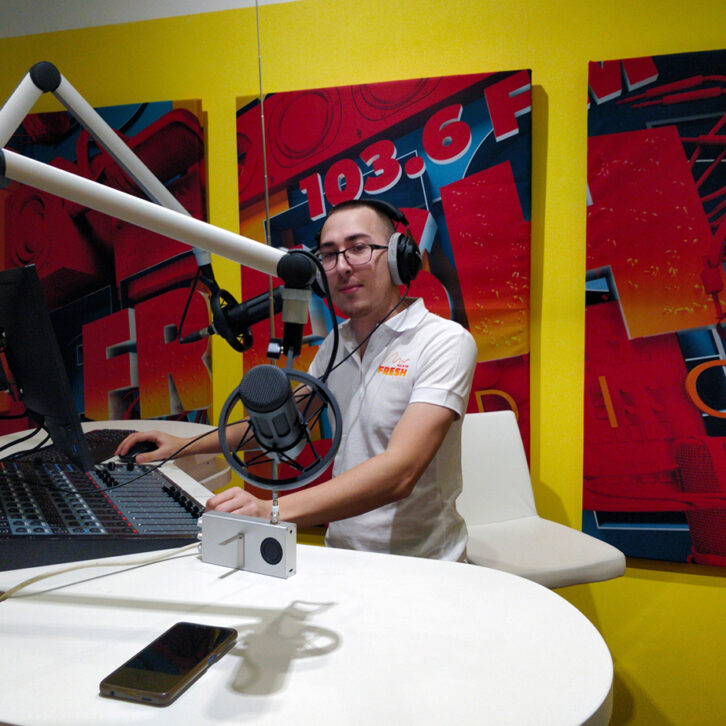
He asked Verhoeven if he could connect the Pioneer stereo to his computer.
“Why would you want to do that,” Verhoeven recalled responding, “when you can build your own fully open-source receiver?”
As development continued, users noticed Verhoeven’s firmware had impressive RDS decode sensitivity. The RDS PI codes were linked to a database stored in the TEF’s memory, containing PI codes for known U.S. stations, for example.
How is the RDS so good?
Verhoeven designed the RDS decoder in his firmware, which taps directly into the TEF chip. It was improved upon further by Polish developer Konrad Kosmatka and the decoder itself is open-source. The approach allows for lesser error tolerance than consumer-grade radios. In testing, it proved highly effective — even during short meteor scatter bursts, RDS PI codes were more likely to be decoded.
As more hobbyists worked on the TEF chip, information-sharing increased. That’s when the Facebook group transitioned to a Discord server.
Old school meets open source
Mike Bugaj of Enfield, Conn., has been interested in FM DXing since the early 1960s. After leaving the Navy in 1969, he joined the Worldwide TV-FM DX Association, which serves VHF propagation enthusiasts.
As its head since 2001, Bugaj is the reason the club still exists. He has heard FM signals from as far away as Mexico by E-Skip propagation and from Arkansas via tropospheric ducting. Over the years, he has used many stereo tuners like the Yamaha T-80. He owns several SDRs, including the SDRPlay RSPDuo.
Serious DXing requires an external outdoor antenna. As a result, he hadn’t invested much in portable radios.
“I considered the Eton Traveler III a very good radio until the TEF came along,” he said.
Bugaj, 78, discovered the TEF in 2023 and considers it a gamechanger. “The selectivity, sensitivity and RDS capturing are just phenomenal.”
FM DXing has traditionally attracted a more experienced crowd, and the WTFDA’s approximately 260 members skew older. However, the proliferation of SDRs over the past decade has drawn a younger contingent to FM DXing. The open-source TEF project has only reinforced this trend.
“I’ve never seen a project like this,” Bugaj said. “Many of these guys are programmers, DXers or both, and they are all working to push this radio to its limit.”
The Discord community has more than 1,800 members, mostly in Europe, but a growing number are in the U.S.
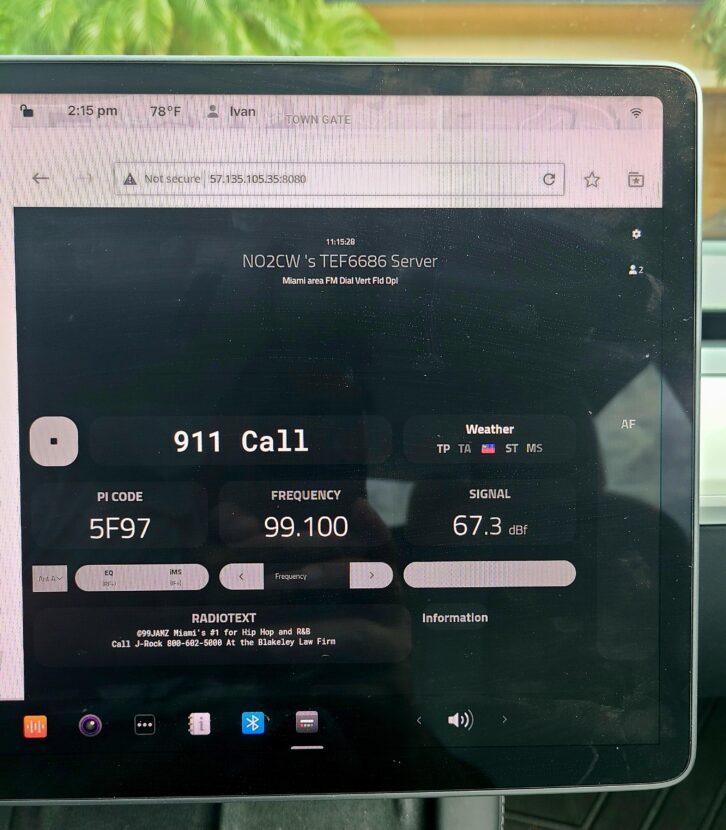
Farkaš noted that the youngest members are as young as 13 — the minimum age allowed by Discord’s terms of service — and estimated that the average participant is around 25. But that hasn’t deterred someone with seniority, like Bugaj.
While they all share a love for FM DXing, the more technologically inclined members are drawn to the TEF’s modifiability and the firmware the team has developed.
The developer duo
Farkaš admits hardware isn’t his forte. But fluent in multiple programming languages, the software developer has contributed significantly to the TEF firmware.
He took Verhoeven’s original version and added unique graphic skins. His theme-switcher is now one of the main features of Verhoeven’s firmware. He also added Wi-Fi support.
At the same time, Verhoeven produced several firmware iterations. In software development, what is known as “divergent change” occurred.
“I was about to move on to other projects until Marek started working on his mods,” Verhoeven said.
Farkaš convinced Verhoeven to continue to enhance the TEF firmware. Throughout the process, the firmware has remained open source.
“When you open-source it, you can learn from each other,” Verhoeven said.
As the TEF portables spread, skeptics doubted their performance — until they tried them firsthand.
The Discord server, originally dedicated to the TEF, evolved into OpenRadio, encompassing Farkaš’ webserver project and Verhoeven’s headless TEF initiative. The group ultimately registered fmdx.org, where you can keep up with their initiatives.
The many iterations of the TEF
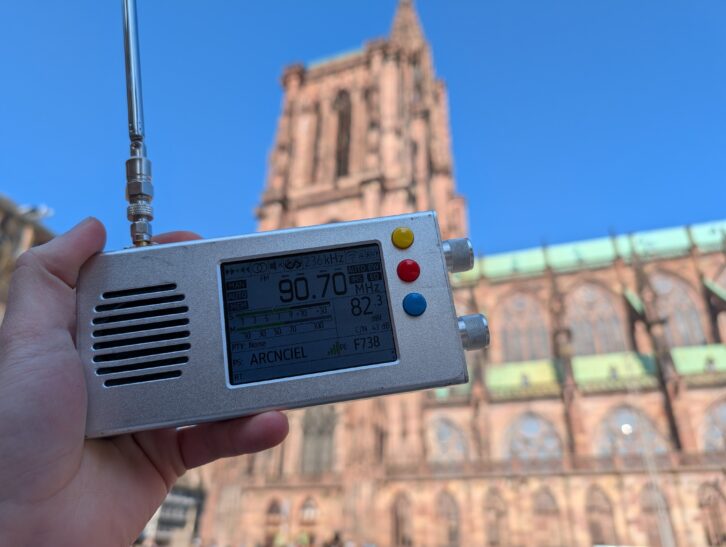
Farkaš estimates that approximately 100,000 TEF6686 portables have been sold on AliExpress.
Sometimes, it is difficult for the pair to get across that they don’t build the radios themselves.
“There are many different versions,” Verhoeven said. “Some have a ‘boot’ button inside the headphone port, which is required for firmware updates. Others have it inside the radio, and some lack one entirely.”
The “silver-metal” portable version is the model most DXers own, which is available on both AliExpress and Amazon.
On AliExpress, it is listed for $70 at this writing, but prices are subject to frequent fluctuations.
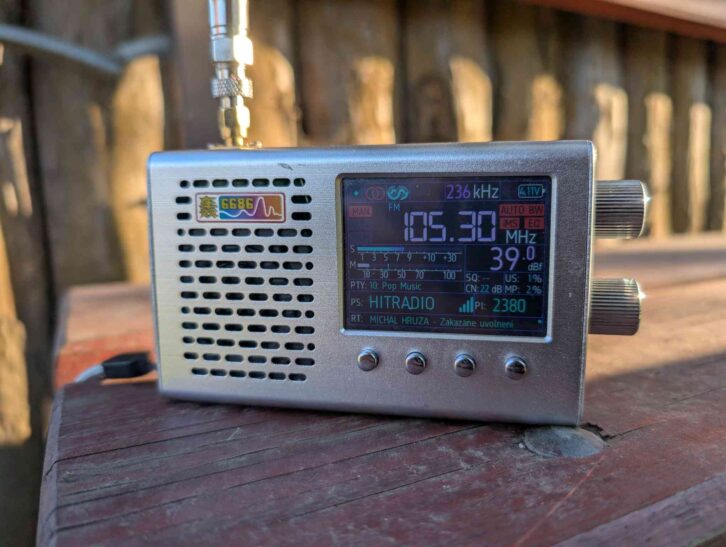
If there’s any weakness with the silver-metal model, it is the build quality. Its SMA antenna connector has been widely reported to be delicate with the potential to be snapped by moving around the whip antenna that is included with the radio. Bugaj and others have noted a tuning knob that tends to wiggle.
That’s why the DIY route might be attractive for the mechanically inclined. Verhoeven has published schematics to build the PCB for the TEF.
Farkaš also maintains a TEF receiver guide as part of the fmdx.org website, which lists popular models using the TEF chip on AliExpress. Farkaš and Verhoeven recommend joining their Discord group to ask which models support firmware updates and customization.
Some other developers have copied and redistributed the firmware, but Verhoeven and Farkaš remain committed to keeping their official releases open-source.
“If we were in it for the money, we’d make it proprietary,” Verhoeven said.
Worldwide webservers
One of the biggest advancements the group has developed is the ability to listen and control the TEF remotely. There are now more than 280 TEF webservers online worldwide; see an interactive map at https://servers.fmdx.org/. A new server recently launched in Bermuda.
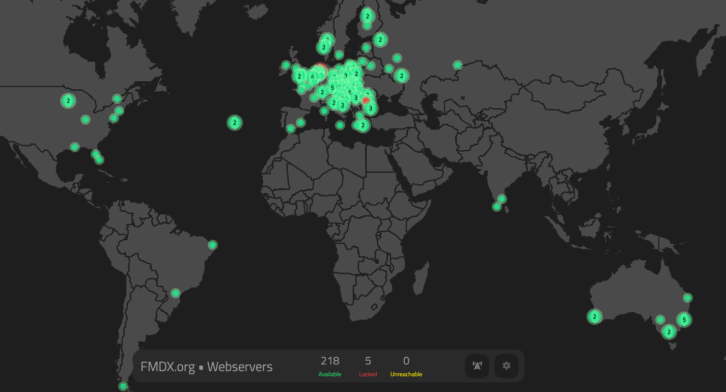
Farkaš had the idea after sharing audio from the XDR-GTK software, which allows remote access to a TEF or Sony XDR-F1HD tuner. He envisioned a web-based display showing frequency and RDS PI codes in real time.
Working with Kosmatka, he integrated RDS data display.
He then implemented low-latency audio streaming from the TEF.
Farkaš made the code public and several community members tested it. “We created a panel showing all users online with TEFs, but it quickly outgrew the available space,” he said.
That led to today’s interactive map. Community-developed plugins now allow users to record what they hear via the webserver.
Bugaj was an early adopter of the webserver in the U.S., after he solved access behind his local ISP’s firewall. “When you set up a public webserver you share your radio dial with the world,” he said. “I would think we all bring ourselves a little closer together in the process.”
The fmdx.org team also paired up with Radio Data Center, the German company behind the popular website FMList, to provide locations of transmitters by country. FMList data fuels the RDS and station information seen on the webserver. “I think what we have is the most accurate system that’s available worldwide for transmitter identification of what you’re receiving,” Farkaš said. Bugaj was one of the first hobbyists in the U.S. to set up a TEF webserver. “If you want to set up a webserver, they will help you until yours is up and running. They do it just for the pure satisfaction of helping you,” Bugaj said.
Verhoeven’s headless TEF is a PCB board that connects directly to a computer to host a TEF webserver instance.
Demand surged, leading a Czech company to produce 40 boards — which quickly sold out. “Now we know how Nvidia feels,” Farkaš joked.
An open-source future
Verhoeven has been working on developing a DAB+ tuner, as the TEF chip lacks DAB support. The group is also considering other radio chips, such as the SI4735 for medium and shortwave.
There are also other versions of the TEF668x chip series. The TEF6688 and TEF6689 chips support HD Radio in the U.S., but according to the pair, those chips are not publicly available.
For now, Verhoeven will continue to maintain his firmware and release bug fixes, when warranted.
Further development efforts are fueled by donations to the community, which go directly to its operational costs.
Meanwhile, members of the growing Discord community continue to chip in with their own enhancements.
A user in Germany named Highpoint2000 built an Android mobile app that matches the RDS being received on the TEF receiver and displays it on a mobile device in real time, which allows the user to log stations as they receive them. U.S.-based DXers can set their TEFs to log directly to RabbitEars.Info’s FM autologger map, developed by Russ Dwarshuis (KB8U).
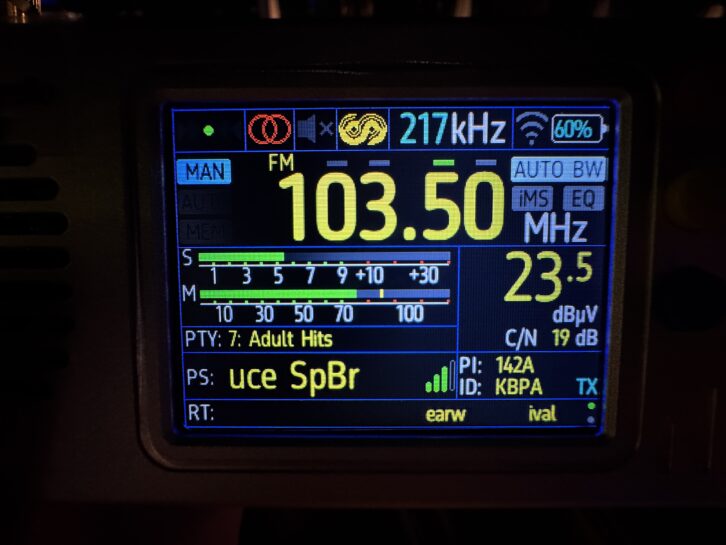
Verhoeven and Farkaš are considering forming an official nonprofit organization for the community.
A search on eBay reveals over 60 different radios with the TEF6686 chip — portable and desktop models in various shapes and colors.
In a world of streaming and smart speakers, it turns out the most modern radio may be the one you build yourself.
A note from the author
I own two TEF6686 portables — one that I use as a travel receiver and the other is connected to my rooftop APS-13 antenna and is part of the fmdx.org webserver platform. I bought my first on Alixepress and my second on Amazon.
My TEF webserver is free to check out and control from my Tabernacle, N.J., location. I’m able to connect coax from the antenna directly to the SMA connector on the radio.
The TEF’s performance is exactly as others have stated: unmatched sensitivity and selectivity, up there with any “conventional” tuner I’ve used. The portables are delicate, however, and chances are that you will break the whip antenna that comes with the radio.
I recommend purchasing a Comet SMA-W100RX2 telescoping antenna as a replacement, available on Amazon.
If you use your TEF in the U.S., make sure to change the region from “Europe” to “Americas” for its RDS to display properly. That might be the best feature the receiver has — thanks to Sjef Verhoeven — it quickly displays RDS PI codes, and then converts the PI code to a U.S. callsign, based on its built-in database.






